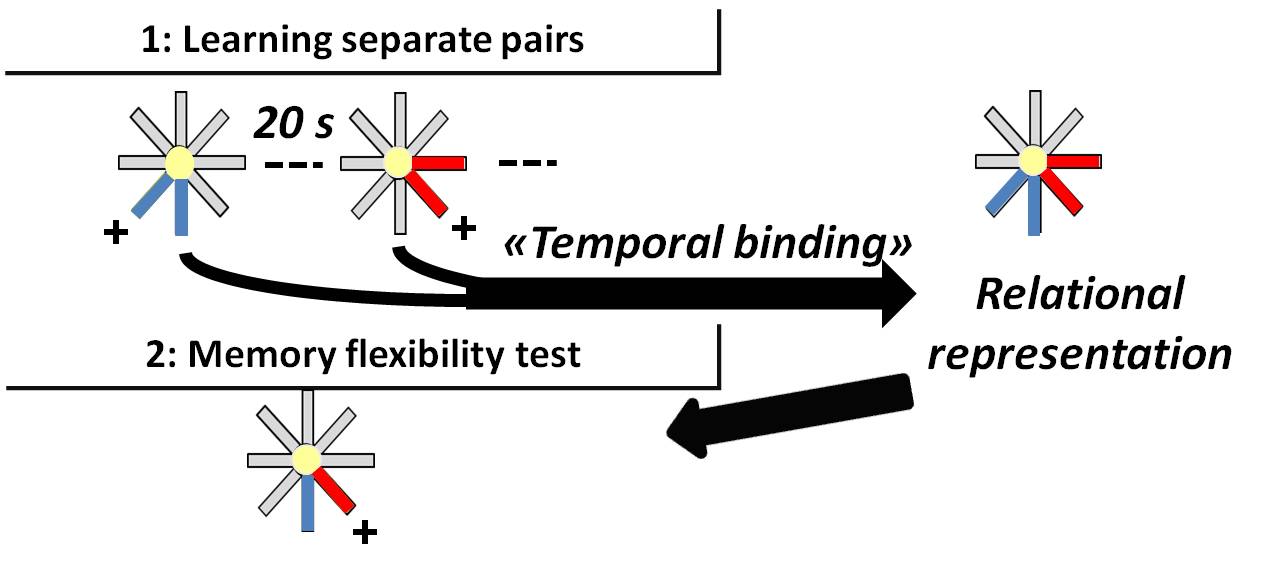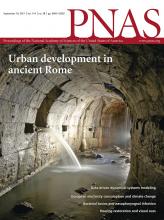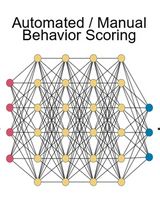- EN - English
- CN - 中文
Protocols to Study Declarative Memory Formation in Mice and Humans: Optogenetics and Translational Behavioral Approaches
研究小鼠和人类中陈述性记忆形成的方案:光遗传学和转化行为方法
(*contributed equally to this work) 发布: 2018年06月20日第8卷第12期 DOI: 10.21769/BioProtoc.2888 浏览次数: 7228
评审: Edgar Soria-GomezFrancesco PapaleoAnonymous reviewer(s)
Abstract
Declarative memory formation depends on the hippocampus and declines in aging. Two functions of the hippocampus, temporal binding and relational organization (Rawlins and Tsaltas, 1983; Eichenbaum et al., 1992; Cohen et al., 1997), are known to decline in aging (Leal and Yassa, 2015). However, in the literature distinct procedures have been used to study these two functions. Here, we describe the experimental procedures used to investigate how these two processes are related in the formation of declarative memory and how they are compromised in aging (Sellami et al., 2017). First, we studied temporal binding using a one-trial learning procedure: trace fear conditioning. It is classical Pavlovian conditioning requiring temporal binding since a brief temporal gap separates the conditioned stimulus (CS) and unconditioned stimulus (US) presentations. We combined the trace fear condition procedure with an optogenetic approach, and we showed that the temporal binding relies on dorsal (d)CA1 activity over temporal gaps. Then, we studied the interaction between temporal binding and relational organization in declarative memory formation using a two-phase radial-maze task in mice and its virtual analog in humans. The behavioral procedure comprises an initial learning phase where subjects learned the constant rewarding /no rewarding valence of each arm, followed by a test phase where the reward contingencies among the arms remained unchanged but where the arms were recombined to assess flexibility, a cardinal property of declarative memory. We demonstrated that dCA1-dependent temporal binding is necessary for the development of a relational organization of memories that allows flexible declarative memory expression. Furthermore, in aging, the degradation of declarative memory is due to a reduction of temporal binding capacity that prevents relation organization.
Keywords: Trace fear conditioning (痕迹性条件恐惧反射)Background
Declarative memory formation (i.e., memory of everyday facts and events) is dependent on the hippocampus and declines in aging (Leal and Yassa, 2015). Two fundamental functions of the hippocampus are known to be age-sensitive. First, the hippocampus supports ‘temporal binding’, (Rawlins and Tsaltas, 1983), a function that allows association in memory of discontiguous events. Trace conditioning tasks allow the demonstration of the critical role of hippocampus in temporal binding (Solomon et al., 1986; Clark and Squire, 1998; LaBar and Disterhoft, 1998; Huerta et al., 2000) and its decline in aging (Disterhoft and Oh, 2007). Second, the hippocampus is critical to the formation of ‘relational organization’, a function that links memorized information/events and consequently supports cardinal flexibility of declarative memory, exemplified in the capability to make inferences from memory (Bunsey and Eichenbaum, 1996) or to compare separately acquired information to guide a choice decision in a novel situation (Etchamendy et al., 2003; Mingaud et al., 2007). This capability is compromised in aging (Rapp et al., 1996; Marighetto et al., 1999; Etchamendy et al., 2001; Mingaud et al., 2008). However, temporal binding and relational organization have always been studied separately. Here, we describe procedures to study how these two processes are related. Our previous study showed that these two hippocampal functions are causally related in the formation of declarative memory by using a specific experimental protocol combining behavioral and optogenetics approaches (Sellami et al., 2017). Specifically, temporal binding is a necessary condition for the relational organization of discontiguous events (Figure 1). We found out that the formation of a relational memory is limited by the capability of temporal binding, which depends on dorsal (d)CA1 activity over time intervals and diminishes in aging. Conversely, relational representation is successful, even in aged individuals, when the demand on temporal binding is minimized, showing that the relational/declarative memory per se is not impaired in aging. Thus, bridging temporal intervals by dCA1 activity is a critical foundation of relational representation, and a deterioration of this mechanism is responsible for the age-associated memory impairment.
Figure 1. Temporal binding is critical to associate discontiguous events into a relational representation allowing flexible expression of memory
Part I: Virus transfection and fiber implantation
Materials and Reagents
- Glass capillaries (WPI, catalog number: 1B150F-4 )
- Silicone catheter (Dominique DUTSCHER, catalog number: 351070 )
- Syringe 1 ml (Henke-Sass, Wolf, catalog number: 4010.200V0 )
- Syringe 5 ml (Henke-Sass, Wolf, catalog number: 4050.000V0 )
- Petri dish 100 x 15 mm
- Implantable Fiber Optic Cannulae (Thorlabs, catalog number: CFMLC12L02 )
- Optic fiber (Thorlabs, catalog number: FT200EMT )
- Patch cable (Thorlabs, catalog number: M83L01 )
- Ceramic split mating sleeve (Thorlabs, catalog number: ADAL1 )
- Parafilm (Heathrow Scientific, Bemis, catalog number: HEA234526A )
- Surgical blades
- Screws (MicroFastenings, catalog number: M0.6x1.5 )
- Needle 26 G x ½" (Terumo Medical, catalog number: NN-2613R )
- Needle 23 G x 1¼" (Henke-Sass, Wolf, catalog number: 4710006030 )
- Cotton swab (The Lab Depot, catalog number: 394305 )
- Stitching kit and sutures (Péters Surgical, catalog number: 87001F )
- 6-well culture plate (Corning, Falcon®, catalog number: 353046 )
- Microscope slide (Thermo Fisher Scientific, catalog number: LCSF02 )
- Cover slips (Knittel Glass, catalog number: VD12450Y1A.01 )
- Brush (Henry Schein France, catalog number: 878-7825 )
- 1 L Solvent Bottle (Thermo Fisher Scientific, catalog number: 045900 )
- Whatman® paper filter (GE Healthcare, catalog number: 1213125 )
- Young adult (3- to 4-mo-old) and aged (21-to 23-mo-old) C57BL/6 male mice (Charles River)
- AAV vectors:
- AAV-CAMKIIa-hChR2(H134R)-EYFP (University of North Carolina (UNC) Vector Core)
- AAV-CAMKIIa-ArchT-GFP (University of North Carolina (UNC) Vector Core)
- AAV-CAMKIIa-GFP (University of North Carolina (UNC) Vector Core)
- AAV-CAMKIIa-hChR2(H134R)-EYFP (University of North Carolina (UNC) Vector Core)
- Isoflurane 1,000 mg/g (4% induction and 1-2% for maintenance, Iso-Vet)
- Betadine
- Super glue (Loctite)
- Liquid fix glue: Methylmethacrylate (Sigma-Aldrich, catalog number: M55909-25ML )
- Super-Bond C&B dental cement (Sun Medical, catalog number: P021E/0A )
- Metacam: Méloxicam 1.5 mg/ml analgesic (Boehringer Ingelheim)
- Lurocaine: Lidocaïne 20 mg (Vetoquinol)
- 70% ethanol solution
- Lacrigel: eye ointment (Europhta)
- Sulmidol: Sulfapyridine 100 mg (MSD, santé animale)
- Hydrogen peroxide (Sigma-Aldrich, catalog number: H1009 )
- Sodium phosphate dibasic, Na2HPO4 (Sigma-Aldrich, catalog number: S0876 )
- Sodium phosphate monobasic, NaH2PO4 (Sigma-Aldrich, catalog number: S0751 )
- Sodium chloride, NaCl (Sigma-Aldrich, catalog number: 433209 )
- Paraformaldehyde (PFA) (Sigma-Aldrich, catalog number: 441244 )
- Sodium Hydroxide solution 1.0 N, NaOH (Sigma-Aldrich, catalog number: S2770 )
- FluorSave reagent (Merck, catalog number: 345789 )
- 0.1 M PBS (see Recipes)
- 0.2 M PB (see Recipes)
- PFA 4%/0.1 M PB solution (see Recipes)
Equipment
- Small scissors (World Precision Instruments, catalog number: 504615 )
- Bone scraper (World Precision Instruments, catalog number: 503759 )
- Drill (RWD Life Science, catalog number: 78001 )
- Fine tip forceps (World Precision Instruments, catalog number: 501975 )
- Needle holder with Suture Scissors (World Precision Instruments, catalog number: 500023 )
- Screwdriver (World Precision Instruments, catalog number: 501635 )
- Compact Power and Energy Meter Console (Thorlabs, catalog number: PM100D )
- Anesthesia system for isoflurane (Datex Ohmeda ISO Isoflurane Anesthesia Vaporizer Tec 7)
- Pipette puller (Sutter Instrument, model: P97 )
- Picospritzer (Parker Hannifin)
- Hair clipper (PHYMEP, model: Contura Shaver )
- Heating pad (Tem Sega, model: THERM250 )
- Mouse stereotaxic apparatus (KOPF INSTRUMENTS, model: 942 )
- Binocular loupe (Leica Microsystems, model: Leica S6E )
- Perfusion pump (Cole-Parmer, model: Master Flex® L/S® )
- Vibratome (Leica Biosystems, model: Leica VT 1000S )
- Microscope (ZEISS, model: Axio Imager A2 )
- The Mouse Brain in Stereotaxic Coordinates, 2001
- TTL pulse generator (Imetronic, Pessac, France)
Procedure
文章信息
版权信息
© 2018 The Authors; exclusive licensee Bio-protocol LLC.
如何引用
Sellami, A., Al Abed, A. S., Brayda-Bruno, L., Etchamendy, N., Valério, S., Oulé, M., Pantaléon, L., Lamothe, V., Potier, M., Bernard, K., Jabourian, M., Herry, C., Mons, N. and Marighetto, A. (2018). Protocols to Study Declarative Memory Formation in Mice and Humans: Optogenetics and Translational Behavioral Approaches. Bio-protocol 8(12): e2888. DOI: 10.21769/BioProtoc.2888.
分类
神经科学 > 行为神经科学 > 学习和记忆
您对这篇实验方法有问题吗?
在此处发布您的问题,我们将邀请本文作者来回答。同时,我们会将您的问题发布到Bio-protocol Exchange,以便寻求社区成员的帮助。
Share
Bluesky
X
Copy link












